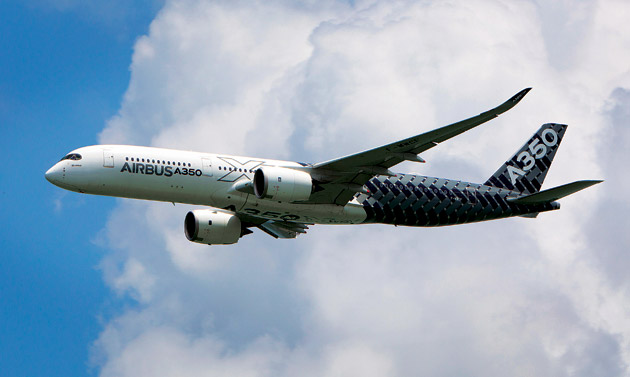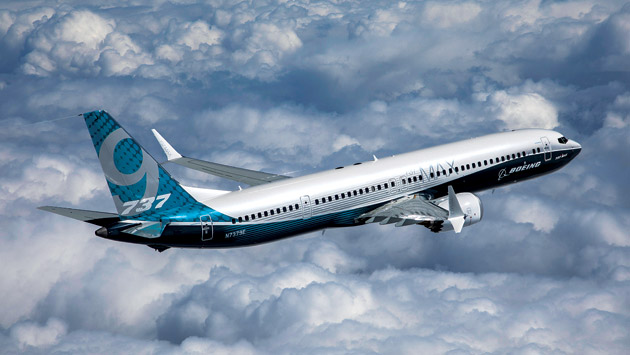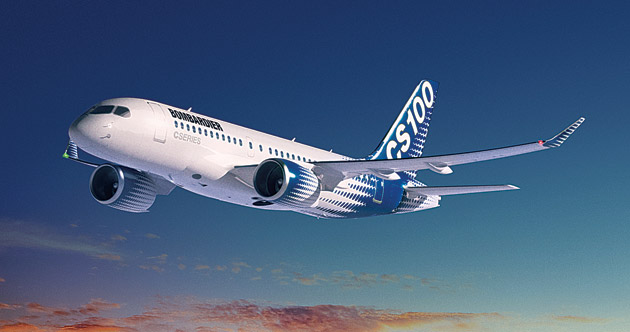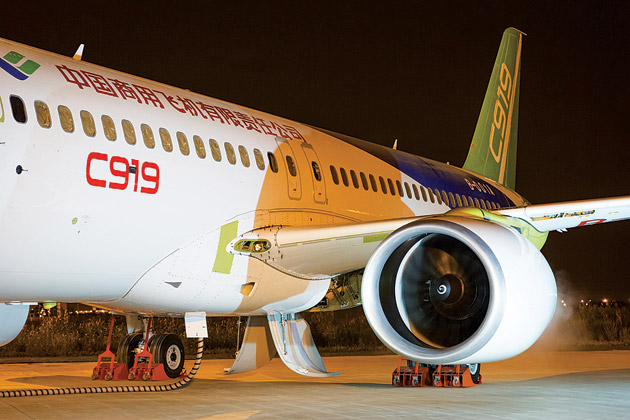Beginning of the End of Airbus-Boeing Duopoly?
“While they will no longer have the market to themselves, we expect Boeing and Airbus to retain the lion’s share of the large commercial airframe market, with emerging competitors garnering only a relatively modest low single-digit share.”
— Moody’s analyst Russell Solomon

In April this year, the Atlanta-based Delta Air Lines (DAL) ordered 75 Bombardier CS100 jets and that has really peeved the US defence and aerospace giant Boeing which has filed a complaint with US International Trade Commission of ‘unfair’ trade practices against the Canadian company, Bombardier Aerospace. The order has kind of shaken the US giant which holds almost duopoly commercial aircraft market with European behemoth Airbus. This could be the beginning of the end of the Airbus-Boeing duopoly.
Moody’s analyst Russell Solomon in a report “The Gloves Come Off as Boeing and Airbus Fight More Than Just Each Other for Share” has forecast “The beginning of the end of the long-running Boeing/Airbus duopoly is upon us.” Solomon said that “Bombardier has joined the ranks of the two big OEMs, and Embraer, in the 100-plus seat narrow-body market. For about the past two decades, the market for large commercial airplanes (100 seats or more) has essentially been a duopoly comprised of the Boeing Company and Airbus Group SE.”

“While they will no longer have the market to themselves, we expect Boeing and Airbus to retain the lion’s share of the large commercial airframe market, with emerging competitors garnering only a relatively modest low single-digit share,” states Solomon.
THE C SERIES IS THE FIRST THAT THE CANADIAN COMPANY IS PITTING ITSELF AGAINST AIRBUS AND BOEING
Bombardier’s steep pricing discount, earlier availability of the CS100 jets and perhaps the most technically proficient model available in its class may have been the swing factors. The C Series is the first that the Canadian company is pitting itself against Airbus and Boeing. The Canadian company has had turbulent times to net the level of sales as the Boeing 737 and the Airbus A320. Despite the struggle, industry experts have acknowledged the performance, fuel efficiency and design of the CS aircraft. The CS100 is a 133-seater aircraft while the CS300 is a 160-seater, competing against the Boeing 737 MAX7 and the Airbus A319neo.
China, Russia join the fray
Meanwhile, others also have jumped into the fray to give the duopoly a run for their money and they include Russia’s Irkut MC-21 and China’s Comac C919. The Irkut MC-21 is designed to compete with the most popular airliners in the world, the single-aisle Boeing 737 and Airbus A320. Irkut MC-21 seats 163 passengers in two classes and has a range of about 3,500 nautical miles (6,400 kilometres). Irkut, which is an arm of the Russian state-owned aerospace conglomerate United Aircraft Corporation, has said that the MC-21 will be 12 per cent to 15 per cent less expensive to operate than its Western counterparts. Irkut has got 175 orders till date.

Irkut MC-21 made its maiden flight on May 28, thus becoming Russia’s first large airliner since the fall of the Soviet Union. Russian airline Aeroflot will be the first to fly the new jetliner. Till date, Aeroflot, the state-run carrier has relied heavily on Airbus and Boeing jets as part of its modernisation, but now with MC-21 coming this is likely to change, particularly in view of the Russian policy which has encouraged the introduction of home-grown models, like the MC-21.
ACCORDING TO AIRBUS’ LATEST GLOBAL MARKET FORECAST 2017-36, THE WORLD’S PASSENGER AIRCRAFT FLEET ABOVE 100 SEATS IS SET TO MORE THAN DOUBLE IN THE NEXT 20 YEARS TO OVER 40,000 PLANES AS TRAFFIC IS SET TO GROW AT 4.4 PER CENT PER YEAR
Similarly, there is challenge coming up from China, the Comac C919 which had its first flight on May 5 this year. Unlike Russia which is looking at marketing to the world MC-21 to increase its non-military aerospace exports, Comac is keen on expanding its domestic market sales. The C919 is in competition with the A320neo and the 737 MAX with a seat capacity of 168. As of now, Comac has 517 orders, but all from Chinese operators. The Shanghai-built airliner is expected to make its first flight next year and enter service sometime after 2020, again denting the market of the duopoly.
Regional jets blurring classification
The Brazilian aerospace major Embraer, a regional aviation player, is knocking on the doors of the two giants. The quick progress of the second-generation of family of E-Jets E2 is going to make other players sit up and notice. Embraer is pitching the E2 as a not so big alternative to the A319 and the Boeing MAX7. The E2 lineup consists of 88-seater E175-E2; the 106-seat E190-E2 and the 132-seat E195-E2.
So also there is another regional player, Mitsubishi from Japan which has come out with the Mitsubishi Regional Jet (MRJ), the first native commercial airliner in 50 years. While the MRJ will address the regional market with its offering of the 80-seat MRJ70 and the 92-seat MRJ90, it is providing a domestic alternative for Japan which mostly has gone the Boeing way. The competition is indeed heating up and the duopoly cannot easily shrug it off saying that they are in a different class altogether.
Even while the others are at the gates, the giants continue their long-established rivalry which one gets to see at the iconic Paris Air Show where battle of words just fly about. The Moody report states that the battle is getting intense as the European air framer wins more narrow-body orders, taking advantage of its earlier start of production of its re-engined narrow-body, the A320neo. Airbus is also close on the heels of the US giant in the wide-body market as it ramps up its production rate for the A350 programme against Boeing’s 787 programme. However, it is the single-aisle market which is hotly contested.
Orders and deliveries
As of May 31, 2017, Airbus in its ‘orders and deliveries’ has claimed 17,155 units of which the A320 narrow-body aircraft account for a huge chunk of 13,111; followed by A330, A340 and the A350 XWB at 2,911; A300 and A310 at 816 and the A380 at 317. Deliveries during May involved 46 A320 family aircraft (including 12 A320/A321neo versions), along with six A330-200/A330-300s, five A350-900s and three A380s.
Boeing’s deliveries in 2017 up to May has been put at 277 with 737 accounting for 187 units; followed by 787 at 53; 777 at 30; 747 at 4 and 767 at 3. In May the net orders were 56, down by two units compared to the previous year. So it has been a ding-dong battle between the two players.
Passenger, freight growth on the rise
However, considering the exponential growth of passenger and freight traffic in the world, there are going to be many opportunities and challenges to the sector per se. The International Air Transport Association (IATA) announced full-year global passenger traffic results for 2016 showing demand (revenue passenger kilometres or RPKs) rose 6.3 per cent compared to 2015 (or 6.0 per cent if adjusted for the leap year). This strong performance was well ahead of the 10-year average annual growth rate of 5.5 per cent. Capacity rose 6.2 per cent (unadjusted) compared to 2015, pushing the load factor up 0.1 percentage points to a record full-year average high of 80.5 per cent.
IT IS REPORTED IN THE MEDIA THAT IT MAY COST BOEING NEARLY $15 BILLION TO DEVELOP THE 797 FAMILY. THIS PROPOSITION MAY NOT SOUND GOOD TO OPERATORS WHO ARE LOOKING AT LOWER ACQUISITION COSTS.
According to Airbus’ latest Global Market Forecast 2017-36, the world’s passenger aircraft fleet above 100 seats is set to more than double in the next 20 years to over 40,000 planes as traffic is set to grow at 4.4 per cent per year. Over this period, increasing numbers of first time flyers, rising disposable income spent on air travel, expanding tourism, industry liberalisation, new routes and evolving airline business models are driving a need for 34,170 passenger and 730 freighter aircraft worth a combined total of $5.3 trillion. Over 70 per cent of new units are single aisle with 60 per cent for growth and 40 per cent for replacement of less fuel efficient aircraft.
With such opportunities and competition, the two have to think of innovation and out-of-the box thinking to meet its ecoefficiency goals and that air travel continues to be one of the safest, and most eco-efficient means of transportation. After celebrating its own four decades of innovation, Airbus now is looking to the next 40-plus years — actively working with other industry stakeholders and experts to anticipate the global needs of a better connected and more sustainable world.
Airbus unveils its 2050 vision for ‘Smarter Skies’
Airbus has initiated the ‘Smarter Skies’ as more flights, fewer emissions and quicker passenger journey times becomes the norm. The Future by Airbus looks beyond aircraft design to how the aircraft is operated both on the ground and in the air in order to meet the expected growth in air travel in a sustainable way. Since launching this report in 2010, Airbus has embarked on a two-year global consultation with more than 1.75 million people through airshows, events and online, as part of the Future by Airbus programme — its vision of sustainable aviation in 2050.
Boeing is MoM
Meanwhile, Boeing plans to introduce a slightly larger single-aisle model (tentatively called the 737 MAX 10X), in an attempt to compete more effectively with the A321neo. It is also mulling a new plane the ‘797’ MoM (middle of the market) aircraft. The 797 would be a twin-aisle plane but would have a smaller cargo hold than a typical wide-body, thus reducing weight and boosting fuel efficiency. Two different versions would seat 220-260 passengers in a standard multi-class configuration and have a stated range of up to 5,000 nautical miles. It is reported in the media that it may cost Boeing nearly $15 billion to develop the 797 family. This proposition may not sound good to operators who are looking at lower acquisition costs.

By contrast, Airbus’ most likely plan for the MoM segment is to stretch the A321LR to boost its passenger capacity and equip it with a new wing to give it more range. This A322 would be relatively cheap to design and build, allowing Airbus to undercut Boeing on price by a wide margin. It would probably be almost as large as the smaller 797 variant, but might be limited to 4,500 nautical miles of stated range.
Airbus and Boeing not only have to fight it out but also have to keep the others at bay. Besides, geopolitical considerations are going to come in play, more so after Donald Trump has become the US President. They are going to be interesting times for the aviation industry.





